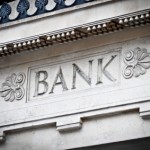Bank ETF Showdown – KBE, KRE, QABA
 In today’s ETF showdown, we’re taking a look at Bank ETFs.
In today’s ETF showdown, we’re taking a look at Bank ETFs.
As you know, ETF providers like iShares, State Street, ProShares, and many others offer ETFs that sound similar. But just because they have a similar name doesn’t mean they’ll have the same performance.
When your hard-earned money is on the line, selecting the right ETF is crucial to maximizing your profits and minimizing your losses.
Let’s take a look at three popular bank ETFs…
SPDR S&P Bank ETF (KBE) focuses on big banks. It uses a modified equal-weighted index. In other words, it invests an equal amount in each of the 48 bank stocks it holds.
It has amassed $2.4 billion in assets under management… the most of any bank ETF.
At a recent price of $31.30, KBE is enjoying a 30% gain so far this year. It’s just 2% below the 52-week high of $31.96.
KBE has an expense ratio of 0.35%. And it pays a nice dividend that works out to a 1.9% annual dividend yield.
This ETF is the best way to get exposure to the national money center banks and other big players in the US banking industry.
SPDR S&P Regional Banking ETF (KRE) takes a different approach to investing in banks. This ETF focuses solely on regional banks or thrifts.
Regional banks are smaller than money center banks. And typically operate in one region of the country.
KRE also uses a modified equal-weighted index that distributes the dollar amount invested in each of its 81 holdings.
It currently trades for $37.20 per share. It’s up 32% this year and outperforming KBE that focuses on the larger banks.
KRE is also one the more popular bank ETFs based on the $2.2 billion in assets under management.
It also has an expense ratio of 0.35%. And it has an annual dividend yield of 1.69%.
Regional banks potentially have the most upside. Bank of America (BAC) recently initiated coverage of several regional banks with an average price target of 20% above current levels.
First Trust NASDAQ ABA Community Bank Index Fund (QABA) is an entirely different spin on bank ETFs. It focuses on the smallest banks.
In fact, it excludes the 50 largest banks altogether… as well as any banks that focus on international or credit card business.
However, in order to be included in QABA, the bank stock must have a market cap of at least $200 million and average trading volume of $500k per day.
There are currently 112 stocks that fit those parameters included in QABA. The stocks are weighted according to their market cap.
At a recent price of $33.29, QABA is up 30% year to date. It has a dividend yield of 1.54%. And the expenses are capped at 0.60% until April 30, 2014.
Community banks are more focused on traditional banking activities of collecting deposits and making loans.
They stand to benefit greatly from a steepening yield curve. The bigger the spread between short term interest rates and long term interest rates, the more money they make.
Here’s the bottom line…
KBE, KRE, and QABA each focus on a different segment of the US banking sector. And they’ve all enjoyed gains of 30% or more so far this year.
Going forward, I think we could see KRE and QABA with their focus on smaller banks outperform the large cap focused KBE.
Good Investing,
Corey Williams
Category: ETFs, Sector ETFs




